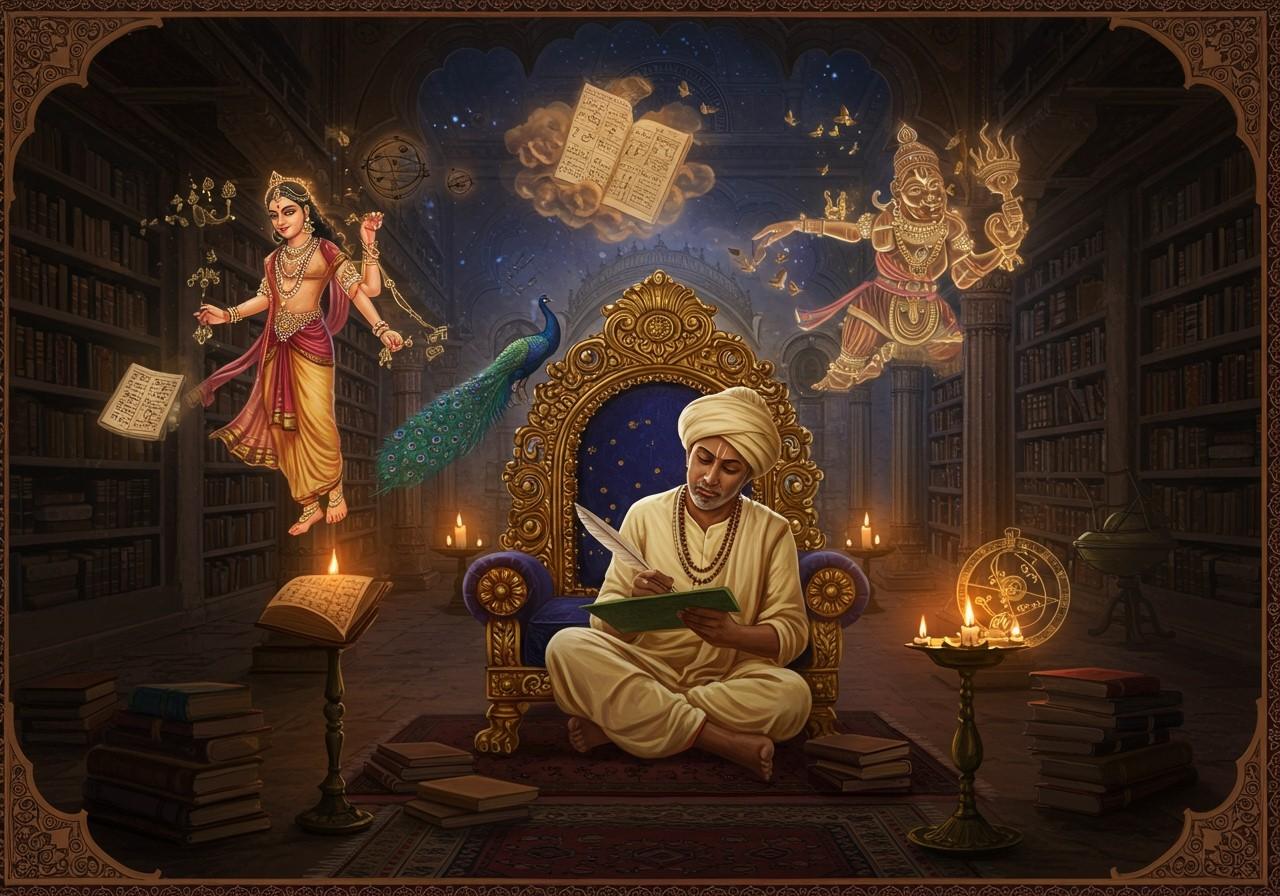
The Gupta Period (4th to 6th century AD), often hailed as the Golden Age of India, witnessed remarkable advancements in various fields, including literature and language. This era saw a flourishing of Sanskrit literature, alongside Prakrit and regional dialects, contributing to a rich tapestry of literary expression. The Gupta dynasty’s patronage of arts and culture fostered an environment where intellectual and creative pursuits thrived, leaving a lasting impact on India’s cultural heritage.
Language in the Gupta Era
The linguistic landscape of the Gupta period was diverse and dynamic. Sanskrit, the language of scholarship and literature, experienced a classical resurgence, becoming the official language of the empire. While Sanskrit served as the primary language for formal communication and literary creation, Prakrit languages continued to be used in everyday life by the common people. Additionally, various regional dialects flourished, enriching the cultural diversity of the era. Religious and philosophical texts, alongside the established educational systems, significantly influenced language development, leaving a legacy that continues to shape Indian languages today.
- Sanskrit: Flourished as the primary language of scholarly works, religious texts, and literary masterpieces, influencing later forms of Sanskrit literature and becoming a cornerstone of India’s cultural heritage. The standardization of grammar and vocabulary during this period contributed to the language’s enduring influence.
- Prakrit: Remained prevalent in everyday communication and folk literature, reflecting the spoken languages of the time and providing a glimpse into the lives of ordinary people. Prakrit literature often explored themes of love, heroism, and everyday life.
- Regional Dialects: Added to the cultural richness of the period, reflecting the linguistic diversity across different regions of the Gupta Empire and contributing to the development of modern Indian languages. These dialects played a vital role in local traditions and cultural expressions.
Flourishing Literature of the Gupta Period
The Gupta period saw a blossoming of literary creativity across various genres. Royal patronage played a crucial role in supporting poets, playwrights, and scholars, leading to the creation of numerous literary masterpieces. This era is particularly known for the works of renowned figures like Kalidasa, celebrated for his poetry and dramas, Aryabhata, a prominent mathematician and astronomer, and Vishnu Sharma, the author of the Panchatantra fables.
- Kalidasa: Considered one of the greatest poets and dramatists in Sanskrit literature, Kalidasa’s works, such as Abhijnanashakuntalam and Meghaduta, are renowned for their lyrical beauty, intricate narratives, and profound insights into human emotions. His works continue to be studied and performed today.
- Aryabhata: A pioneering mathematician and astronomer, Aryabhata’s contributions to science and mathematics were significant. His work, Aryabhatiya, covers topics like arithmetic, algebra, trigonometry, and astronomy, demonstrating the intellectual prowess of the Gupta era. His accurate calculations of pi and the length of the solar year were groundbreaking for the time.
- Vishnu Sharma: Known for the Panchatantra, a collection of animal fables with moral and ethical lessons, Vishnu Sharma’s work has been translated into numerous languages and continues to be enjoyed by readers of all ages. The Panchatantra’s wisdom and storytelling have had a lasting impact on world literature.
Religious and philosophical texts, often exploring themes of Hinduism and Buddhism, formed a significant part of Gupta literature. These works, along with secular literature such as poetry and drama, played a crucial role in preserving historical and cultural narratives, contributing significantly to India’s rich literary tradition.
Inscriptions: Windows into Gupta History
Inscriptions from the Gupta period provide invaluable insights into the era’s history, culture, and administration. These inscriptions, found on various materials like stone, metal, and pottery, take different forms, including royal edicts, land grants, and commemorative records. The Allahabad Pillar inscription, for instance, offers crucial information about the reign of Emperor Samudragupta. These inscriptions serve as important sources for understanding the political, social, and economic aspects of Gupta society, as well as the development of writing systems and literacy during the period.
A Lasting Legacy
The Gupta period’s influence on subsequent Indian literature and language is undeniable. Sanskrit literature continued to evolve after the Gupta era, drawing inspiration from the classical works of this golden age. Literary themes, styles, and conventions established during the Gupta period were transmitted to medieval and modern Indian literature, shaping literary traditions for centuries to come. Regional languages integrated elements of Gupta-era Sanskrit and Prakrit, further solidifying the period’s linguistic legacy. Educational systems and scholarly traditions were also deeply influenced by the intellectual achievements of the Gupta era. The preservation of Gupta literary works through manuscripts and oral traditions ensured that the knowledge and wisdom of this era were passed down through generations, contributing to India’s cultural identity and earning global recognition for its enduring value.
Explore Gupta Heritage with Poojn.in
Celebrate the rich heritage of the Gupta period with Poojn.in, India’s leading online store for cultural and religious products. Discover a wide selection of books, scriptures, and artifacts that reflect the art, literature, and spirituality of this golden age. Deepen your understanding of ancient India and connect with its vibrant cultural legacy through our curated collection.
Explore our collection of relevant products:


